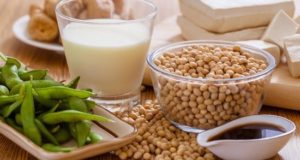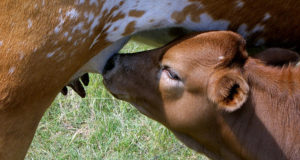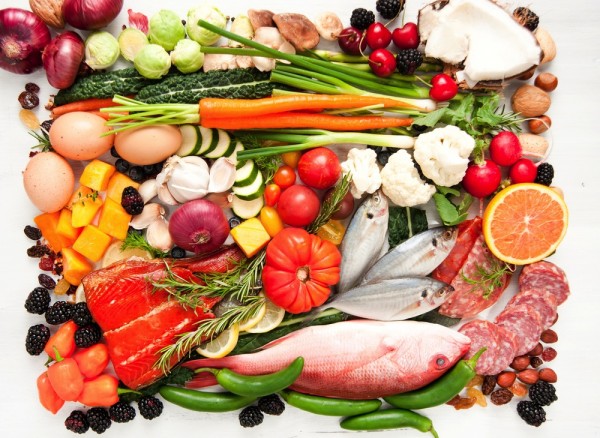
Gout was once called the ‘disease of kings’ because it was associated with wealthy men who overindulged in rich food and drink. King Henry VIII of England, who was grossly overweight, suffered from debilitating gout. Other prominent gout suffers in history include Benjamin Franklin and Thomas Jefferson.
While gout is no longer confined to rich folk and kings, it is part of a class of diseases described by T. Colin Campbell of Cornell University as ‘diseases of affluence.” As John McDougall, M.D., points out, the standard Western diet of today contains more fat, sugar, and processed food stripped of its nutrients and fiber than the diets of kings and queens throughout history. Gout is a result of too much saturated fat, too many purines, and not enough plant fiber in the diet.
The Basics of the Gout Diet
Diet and hydration (keeping enough water in your body) are very important in preventing gout attacks. Drinking lots of water helps to dilute urinary uric acid, thus reducing the chance of an attack. Alcohol has the opposite effect – so you should avoid it drink no more than one to three drinks a week. Controlling weight and improving your diet are also helpful.
What Should I Avoid on the Gout Diet?
The most important element of the gout diet is to avoid high purine foods and foods that cause your body to produce large amounts of uric acid. Some purines are made in the body and some come from the food we consume. Eating foods high in purine will raise the uric acid levels in your body. Therefore, if you restrict the amount of high purine food you eat, you will lower the risk of getting gout. And reducing the amount of animal protein in your diet will help prevent attacks of gout, as well as many other lifestyle diseases.
Foods high in purines are typically protein-rich foods, such as sweetbreads, anchovies, sardines, organ meats, red meat and turkey. In addition to alcohol, specific foods that are best to avoid altogether include:
- Fish and shellfish – anchovies, sardines, herrings, cod, trout, haddock, mussels, scallops, crab, lobster, oysters, shrimp
- Meat – game meats, bacon, liver, kidney, brains, meat extracts, beef, ham, pork Poultry – turkey
There are also foods with moderate levels of purines. These include:
- Poultry – chicken, duck
- Vegetables – asparagus, kidney beans, lentils, lima beans, mushrooms, spinach
When you have eliminated most animal products from your diet, you can probably reintroduce these foods without a problem, as they have many other significant health benefits.
Limiting refined sugars, including sucrose and fructose, is also important as they raise uric acid levels. The same is true with nutritional or brewer’s yeast. Remember, the more you limit purines in your diet, the less likely you are to suffer from gout or need to rely on medications or other therapies for treatment.
The other big culprit in triggering gout, as well as other forms of arthritis, is animal protein. Since animal products have no carbohydrates, they’re entirely made up of protein and fat. High-protein animal products produce uric acid in the body, which can cause and trigger gout.
What Can I Eat on the Gout Diet?
Cherries (red, black, sweet yellow or red sour) help prevent gout, as was first demonstrated in a 1950 study. Twelve individuals with gout were given one-half pound of cherries or the equivalent amount of cherry juice and successfully prevented future attacks of gout. Since this study it is believed that strawberries, blueberries and other red or blue berries can also be helpful. The potential benefits of cherries is discussed in more detail in my book, How to Relieve and Prevent Gout [
Other foods that are safe or even beneficial include:
- Vegetable and fruit juices – non-citrus, vegetable, celery, red cherry, and carrot juices
- Celery – renews joints, bones, arteries and connective tissues
- Tomato – alkalizes the blood and is good for treating the acid blood condition of gout
- Other vegetables – kale, cabbage, parsley, and other green, leafy vegetables
- Fruit – bananas, other non-citrus fruits
To sum up, gout is a disease that is largely caused by diet, and can be controlled, relieved, reversed and prevented by the Gout Diet as well.

Source by Howie Jacobson
 Vitamin Agent The Health & Naturalistic Source
Vitamin Agent The Health & Naturalistic Source






http://omtivacbd.org/ – cbd clinic level 5